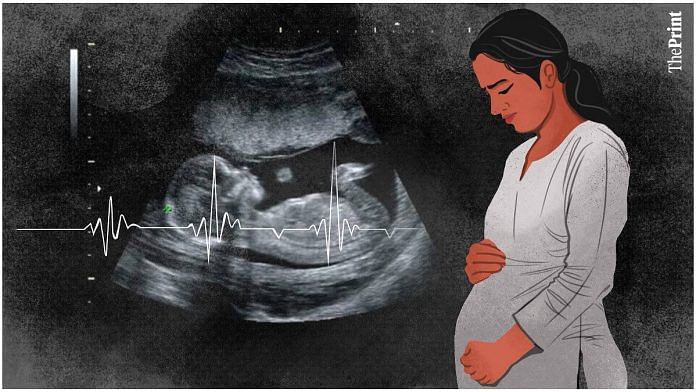New Delhi: In 2023, India accounted for the second highest maternal deaths globally, tied with the Democratic Republic of Congo (DRC) with 19,000 and second only to Nigeria, a new report by the United Nations shows. This amounted to 52 fatalities each day.
Maternal deaths include those related to complications during childbirth or pregnancy.
The report, titled ‘Trends in maternal mortality 2000-2023’, was prepared by the World Health Organisation (WHO), UNICEF, UN Population Fund, World Bank and UN Department of Economic and Social Affairs (population division), and published Monday.
It revealed that Nigeria had the highest number of maternal deaths and accounted for more than a quarter (28.7 percent) of all estimated global maternal deaths in 2023, with approximately 75,000 deaths.
Only three other countries had more than 10,000 maternal deaths in 2023—India, the Democratic Republic of the Congo, and Pakistan (11,000). India and DRC accounted for 7.2 percent each, while Pakistan accounted for 4.1 percent of global maternal deaths.
Together, these four countries accounted for almost half (47 percent) of all maternal deaths globally in 2023, according to the report.
China, the only other country on the planet comparable to India by population registered just 1,400 maternal deaths in 2023, said the report.
The statistics reveal that India’s maternal mortality rate (MMR)—or the rate at which women per lakh die due to childbirth or pregnancy-related issues—was 362 in 2000 and came down to 80 in 2023, marking a decline of 78 percent over the period.
China, in comparison, had a MMR of 56 in 2000 which came down to 16 in 2023, registering a decline of more than 70 percent.
Overall, a 40 percent global decline in maternal deaths was seen between 2000 and 2023—largely due to improved access to essential health services, said a statement by WHO.
Still, the report reveals that the pace of improvement has slowed significantly since 2016 and that an estimated 2,60,000 women died in 2023 as a result of complications from pregnancy or childbirth. This was roughly equivalent to one maternal death every two minutes.
The report comes as humanitarian funding cuts are having severe impacts on essential healthcare in many parts of the world, forcing countries to rollback vital services for maternal, newborn and child health. The report also said that these cuts have led to facility closures and loss of health workers, while also disrupting supply chains for lifesaving supplies and medicines such as treatments for haemorrhage, pre-eclampsia and malaria—all leading causes of maternal deaths. Without urgent action, the agencies warn that pregnant women in multiple countries will face severe repercussions, particularly those in conflict zones, where maternal deaths are already alarmingly high.
“While this report shows glimmers of hope, the data also highlights how dangerous pregnancy still is in much of the world today—despite the fact that solutions exist to prevent and treat the complications that cause the vast majority of maternal deaths,” Dr Tedros Adhanom Ghebreyesus, WHO director-general, said in the statement.
The report also provides the first global account of the COVID-19 pandemic’s impact on maternal survival. In 2021, when the second wave of COVID was at its peak in most parts of the world, an estimated 40,000 more women died due to pregnancy or childbirth, taking the total number of deaths that year to 3,22,000 from 282,000 the previous year.
This upsurge was linked not only to direct complications caused by COVID-19, but also widespread interruptions to maternity services, the report said, highlighting the importance of ensuring the provision of such care during pandemics and other emergencies.
Pregnant women need reliable access to routine services and checks as well as round-the-clock urgent care, it said.
Also Read: India’s Maternal Mortality Ratio has fallen much faster than the world’s since 1990. Here’s how
Most deaths due to post-partum haemorrhage
Haemorrhage is a direct obstetric cause of death and remains the leading cause of maternal mortality globally. Other direct obstetric causes of maternal death include hypertensive disorders of pregnancy; pregnancy-, childbirth-, and postpartum-related infections; and complications of unsafe abortion.
Most of these are preventable. Indirect obstetric causes as a group are the second most common cause of maternal death globally, and these include noncommunicable diseases (NCDs) and chronic conditions, such as pre-existing hypertensive disorders, diabetes mellitus, and maternal infectious and parasitic diseases, many of which can
pre-date pregnancy.
The third most common cause of maternal death is hypertensive disorders of pregnancy.
Despite the existence of clinical and health-system interventions to prevent many of these causes of death, they are often not available or accessible for manifold reasons, leading to a high burden of death, particularly in low- and middle-income countries.
Gestational diabetes has also been listed as the most common medical disorder in pregnancy. Other NCDs commonly experienced by pregnant women include asthma,
cardiac conditions, epilepsy, haemoglobinopathies, and mental health and substance use conditions.
Jashodhara Dasgupta, an independent researcher on women’s health underlined that, in India, while the declining fertility rate could be a key driver of MMR reduction, lack of capacity to deal with complicated pregnancies at the publicly run primary and community health centres may the main reasons of the plateauing maternal deaths.
“While PHCs and CHCs by and large handle normal deliveries pretty well, they are mostly unable to offer obstetric care in complicated cases due to lack of manpower and resources and may ask patients to try elsewhere,” she told ThePrint.
In southern states since many patients can access private hospitals due to better paying capacities, MMR has improved substantially, whereas in northern states with poorer socio-economic standards, a large number of poor women continue to die due to lack of accessible and affordable emergency obstetric care, she said.
(Edited by Sanya Mathur)
Also Read: House panel pulls up govt over lack of separate maternal mortality database for tribals




